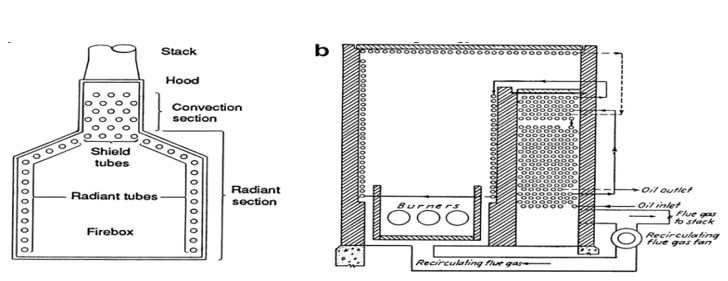Main Article Content
Abstract
The need for high quality product has necessitated the scientists to put in more effort to produce metal of high quality at lower price. This job considered the possibility of optimizing the product and brings out the product at cheaper price. Nigeria as a developing country needs metal for different purpose like construction of roads, houses, bridges, and other infrastructure. Defined parameters of optimum work of EAF-50 comparing with the basic variant expenditure by limit has reduced by 33% (from 41,1 to 28,2 Ruble\ton) Relative usage of electric energy by 51% (from 0,5463 to 0,2669 mw Hour/ton) Hour productivity rose by 74% (from 71,17 to 123,61 ton/hour).
Keywords
Expenditure;
heat loss
refinery
cost price
optimization
melting period
refinery period
useful energy
Article Details
References
- Alireza, B., & Vuthaluru, H. B. (2010). Novel predictive tools for design of radiant and convective sections of direct fired heaters. Applied Energy, 87(7), 2194–2202. https://doi.org/10.1016-/j.apenergy.2009.11.028.
- Belov, A., Kartak, V. M., Vasenev, A., Meratnia, N., & Havinga, P. J. (2016). A hierarchical scheme for balancing user comfort and electricity consumption of tank water heaters. In 2016 IEEE Power & Energy Society Innovative Smart Grid Technologies Conference (ISGT) (pp. 1–5). Retrieved from https://ieeexplore.ieee.org/document/7781268
- Booysen, J., M., & A, E. J. A. M. A. (2013). Proof of concept: Large-scale monitor and control of household water heating in near real-time. In Presentation presented at the International Conference on Applied Energy ICAE 2013. Retrieved from https://scholar.sun.ac.za-/handle/10019.1/85478
- Garg A. (1998). Revamp fired heaters to increase capacity. Hydrocarbon Processing, 67–80. Retrieved from https://www.hydrocarbonprocessing.com/magazine/1998/june-1998/heat-transfer/revamp-fired-heaters-to-increase-capacity
- Ibrahim, A.-H., & Al-Qassimi, M. (2008). Matlab program computes thermal efficiency of fired heater. Periodica Polytechnica Chemical Engineering, 52(2), 61–69. https://doi.org/10.3311/pp.ch.2008-2.03
- Jegla Zdeněk. (2006). The Conceptual Design of a Radiant Chamber and Preliminary Optimization of a Process Tubular Furnace. Heat Transfer Engineering, 27(6), 50–57. https://doi.org/10.1080-/01457630600674683
- Lu, N., & Katipamula, S. (2005). Control strategies of thermostatically controlled appliances in a competitive electricity market. IEEE Power Engineering Society General Meeting, 1, 202–207. Retrieved from https://ieeexplore.ieee.org/document/1489101
- Marcel, T., Igor, B., Jiri, K., & Petr, S. (2003). Cost estimation and energy price forecasts for economic evaluation of retrofit projects. Applied Thermal Engineering, 23(14), 1819–1835. https://doi.org/10.1016/S1359-4311(03)00136-4.
- Mussati, S., Juan, M. I., Sonia, B. J., & Nicolas, J. S. (2009). Mixed Integer Nonlinear Programming model for the optimal design of fired heaters. Applied Thermal Engineering, 29(11–12), 2194–2204. https://doi.org/10.1016/j.applthermaleng.2008.11.001
- Nei, J. P., Booysen, J. M., & B., M. der Van. (2018). A Computationally Inexpensive Energy Model for Horizontal Electric Water Heaters with Scheduling. IEEE Transactions on Smart Grid, 9(1), 48–56. https://doi.org/10.1109/TSG.2016.2544882
- Du, P.& Lu, N. (2011). Appliance Commitment for Household Load Scheduling. In IEEE Transactions on Smart Grid, 2(2), 411–419. https://doi.org/doi: 10.1109/TSG.2011.2140344
- Solomahin, C. I., & Portuova, G. E. (1972). Mathematical programming of technical-economic problem in black metallurgy. Moscow.
- Zegla, Z. (2000). Plant energy saving through efficient retrofit of furnaces. Applied Thermal Engineering, 20(14), 1545–1560. https://doi.org/10.1016/S1359-4311(00)00031-4.
- Zbigniew, M., Janikow, Z. C., & Krawczyk, B. J. (1992). A modified genetic algorithm for optimal control problems. Computers & Mathematics with Applications, 20(83–94). https://doi.org/10.1016/0898-1221(92)90094-X.
